This issue of the Subterranean (“Independent in everything, Neutral in nothing”), dated August 26, 1843, was acquired by AAS circa 2001 as part of a generous donation of Racy newspapers from Leo Hershkowitz. Published in New York City and reaching their peak in the 1840s, the contents of these papers are full of colorful stories about various “fanatical traitors, bigoted sectarians, swindlers, speculators, robbers, bankers and brokers….” People were named outright, so it’s not surprising these papers were found in the N.Y. District Attorney’s office for possible slander lawsuits.
All these years later, the condition of the paper was critical: discolored, brittle, creased, and mutilated, with losses, tears at every fold, and, oh goody, adhesive tape. The paper was in nine fragments, repaired with five pieces of Magic Mend tape keeping the various sections somewhat connected. One quadrant of the front page was missing. Another section was secured by tape in the wrong place. There’s iron gall ink manuscript along the bottom of page 52 that had begun eating through the paper, ready to crumble away. The tiny 6 pt. type was in danger of being lost in many places. It was so fragile that one couldn’t really handle the paper until the tape came off.
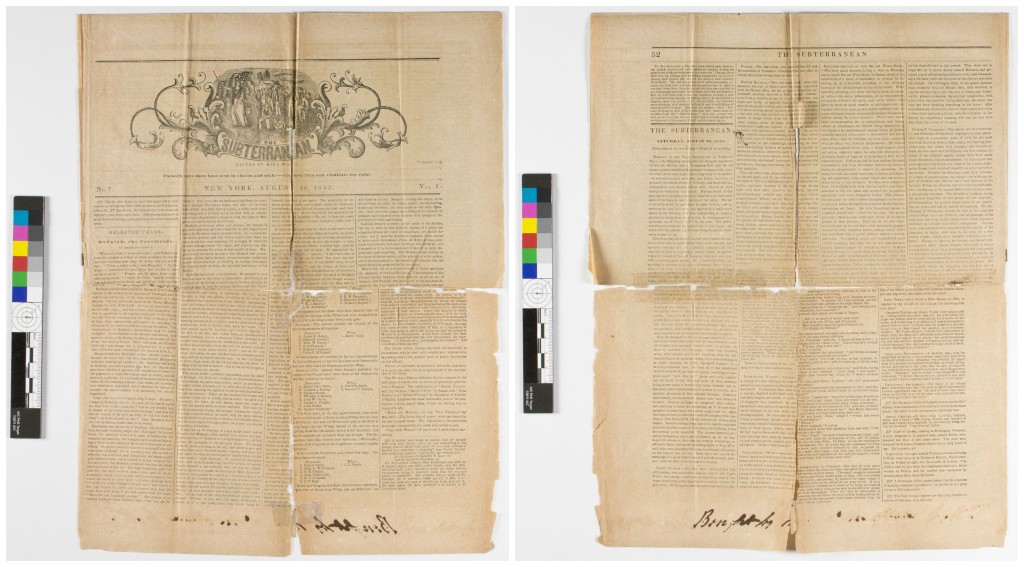

After photo documentation and a condition write-up, the tape was successfully removed in a bath of 200-proof ethanol. First, the carrier was lifted, and then the adhesive was gently scraped off with a spatula. The small bits of paper that had been attached to the tape, which were still sticky, were bathed in ethyl acetate, twice, to remove any residual adhesive.
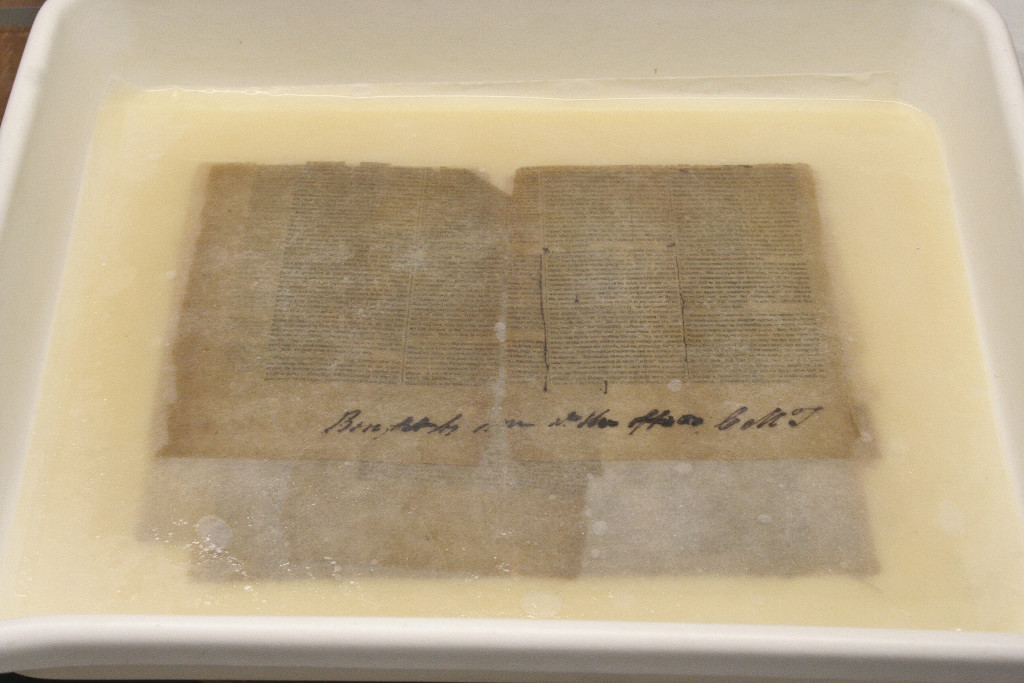 The newspaper was then washed with subsequent baths until the water was clear, and given a final alkalizing bath with magnesium bicarbonate (a 50:50 solution). After drying, the paper was resized with gelatin (a .7% solution) and dried between Hollytex sheets and woolen felts.
The newspaper was then washed with subsequent baths until the water was clear, and given a final alkalizing bath with magnesium bicarbonate (a 50:50 solution). After drying, the paper was resized with gelatin (a .7% solution) and dried between Hollytex sheets and woolen felts.
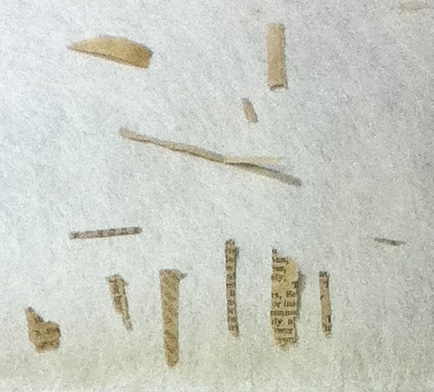
The mending required joining all the various sections, mending tears, filling losses, and restoring the little bits of text. That last part was like working on a jigsaw puzzle. Each time the right spot for a wee little couple of letters was found felt like cause for celebration. There is a plentiful assortment of Japanese tissues available here in the lab, ranging from very transparent to opaque (see below). The thinnest tissue was used over the text so it could still be easily read, and the most opaque was used to fill the areas of loss. The tissues were toned in a bath with watery acrylic paints to match the original material, so that it would blend with the newspaper and not be distracting to the eye. Zin Shofu wheat starch paste was used to adhere the Japanese tissue mends. The process is reversible with a little moistening , should there be a reason in future to do so.
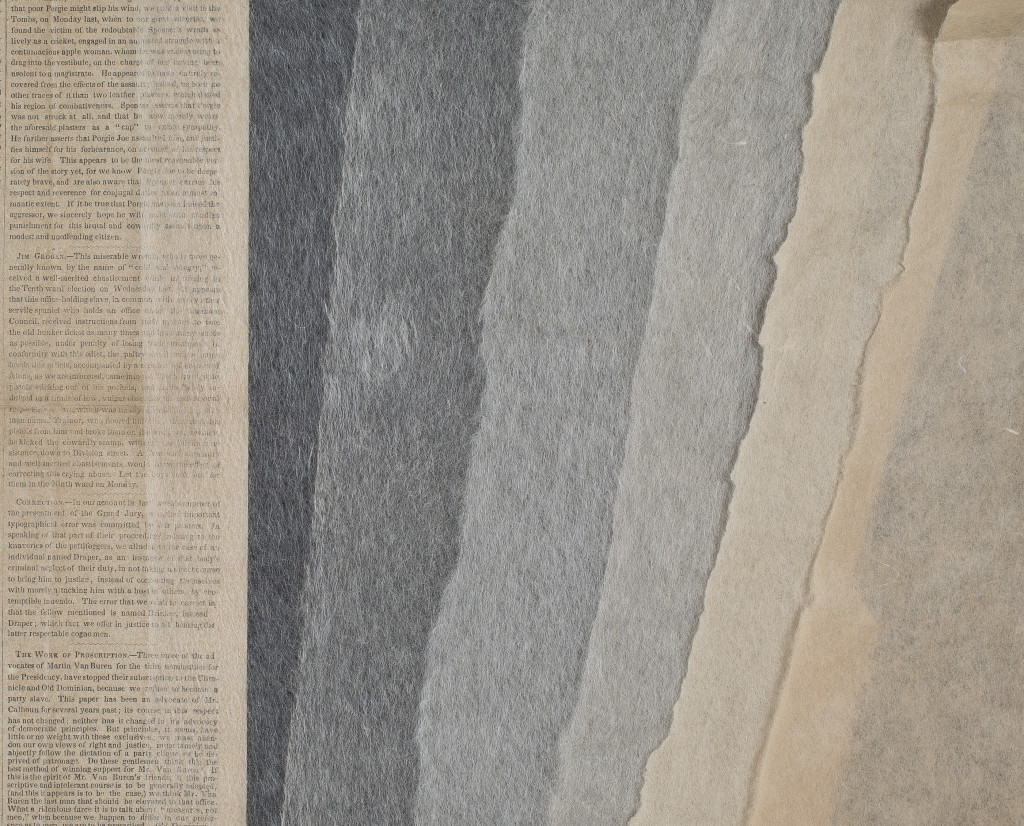
Even after washing and alkalizing the paper, it’s still thin and delicate and prone to edge tears. The newspaper unfolded measures 21 x 28”. Because of its still-fragile condition, it seemed safer to leave it in two pieces, and place them each in clear polyester folders for extra protection within the archival paper folders.
See here for all of the photographs documenting the conservation of this issue!

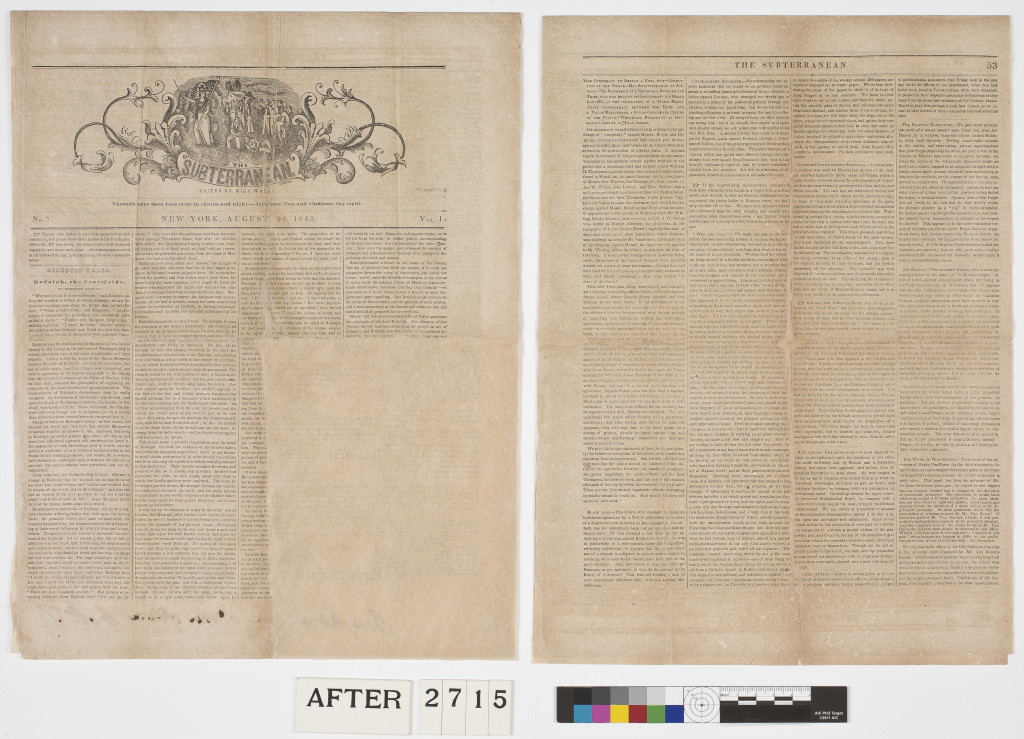
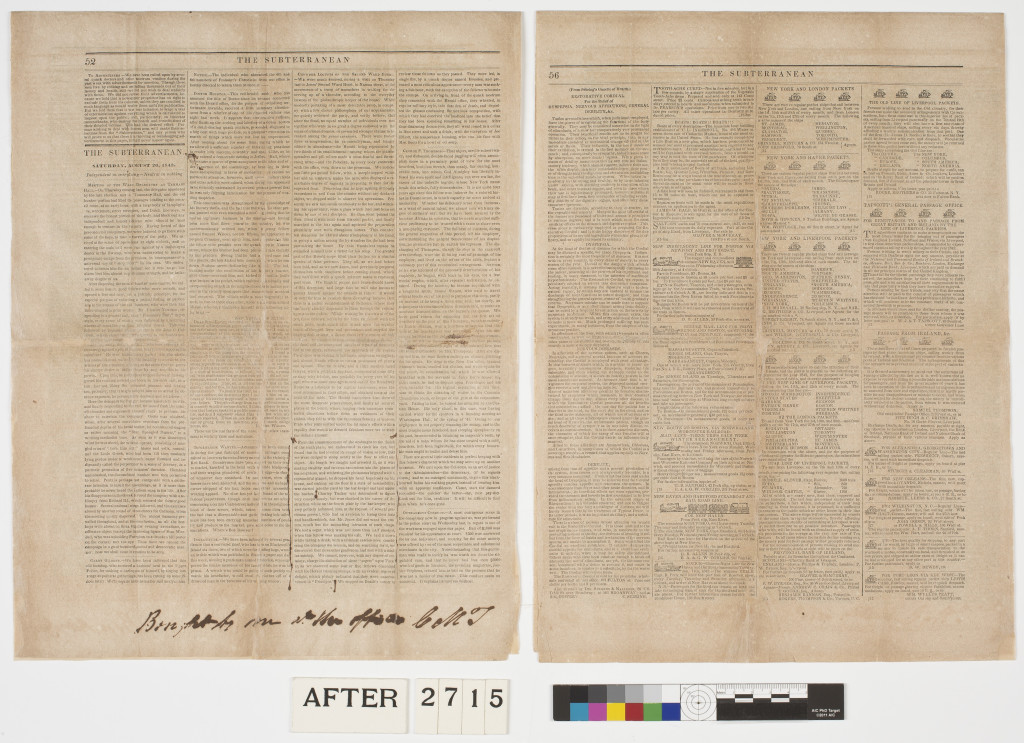
One thought on “Read all about it! The Conservation of a Racy Newspaper”